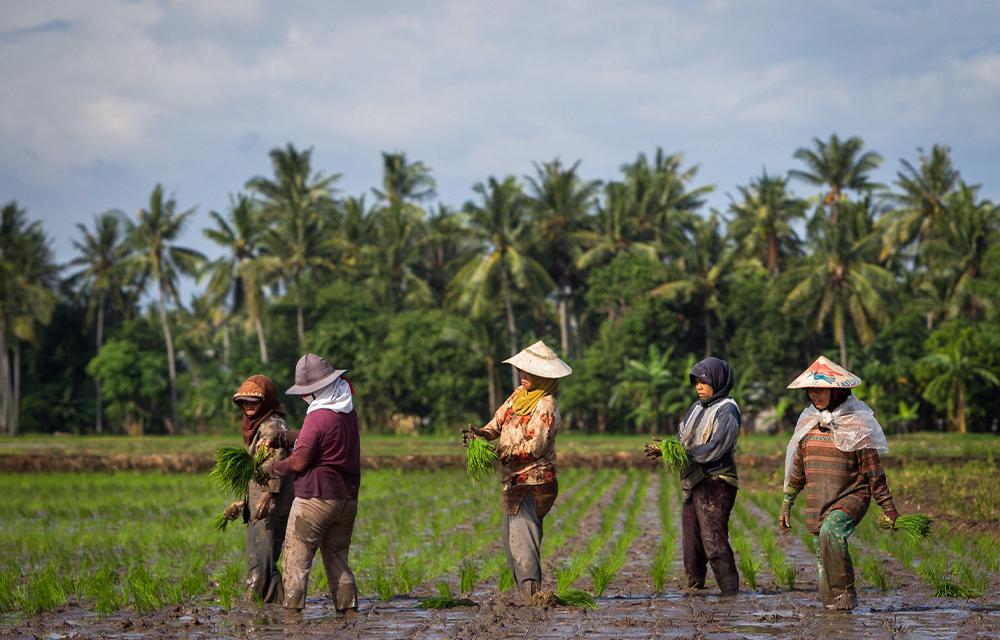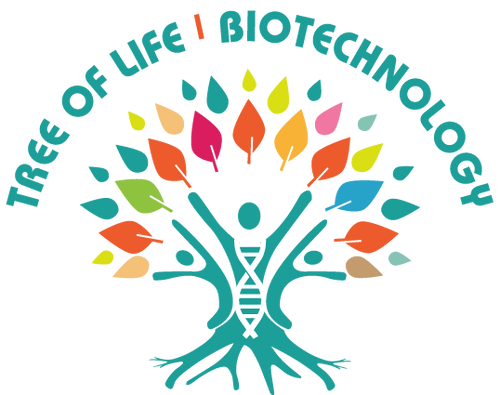Re-imagining Agronomy - Innovations & Pathways for Sustainable Agriculture

Introduction
In the intricate world of agriculture, particularly within the diverse landscape of countries like India, innovation & strategic reform are not mere options but necessities. As we stand on the precipice of global change, the agricultural sector requires a comprehensive, 360-degree analysis & overhaul, that acknowledges the multifaceted challenges faced by farmers. This transformation, however, should not be insular. It must align with the United Nations Sustainable Development Goals (SDGs), ensuring that our strides towards agricultural innovation contribute to these broader global commitments.
Understanding the 'Farmer 360' Concept
At the core of the innovative approach is the farmer, the central figure upon whose well-being and success the pillars of food security & agricultural sustainability rest. The 'Farmer 360' concept revolutionizes how we perceive and support farmers. It involves creating a digital avatar for each farmer, representing a consolidated, holistic profile encompassing various aspects of their lives.
This avatar is not a mere digital identity. It's a portal into the farmer's world, providing real-time insights into their health, educational background, financial status, familial dynamics, landholding details & more. It's a comprehensive support mechanism that doesn't just solve problems but anticipates them.
For policymakers & CXOs, 'Farmer 360' provides a macroscopic view of the agricultural workforce's status. It aids in formulating targeted policies, allocating resources more efficiently, and introducing interventions right at the grassroots level, where the impact is most profound. This approach aligns seamlessly with multiple SDGs, primarily SDG 1 (No Poverty), ensuring economic stability for farmers, and SDG 3 (Good Health and Well-being), addressing often overlooked mental & physical health concerns within the farming community.
'AgroSphere' - A Global Classroom
The 'AgroSphere' initiative transcends geographical & cultural barriers, creating a global knowledge-sharing platform. This program isn't just about imparting education; it's about fostering a culture of continuous learning & global collaboration. Through immersive VR technology, farmers explore agricultural practices worldwide, adapting diverse & innovative techniques suitable for their local environment.
For global leaders, educators & policymakers, 'AgroSphere' is a tool of empowerment, creating a more resilient, self-reliant farmer community. It supports SDG 4 (Quality Education), providing equitable quality education & promoting lifelong learning opportunities. Furthermore, it contributes to SDG 17 (Partnerships for the Goals), emphasizing the role of global solidarity in achieving sustainable development.
Decentralized Agricultural Grids - Towards Sustainable Energy Solutions
The transition to renewable energy is no longer a choice but a responsibility. The proposal for decentralized agricultural grids focuses on harnessing renewable energy sources at the local level, reducing dependency on non-renewables, & mitigating the adverse effects of climate change.
These self-sustaining grids, managed by the community, mark a paradigm shift in energy consumption and management in agriculture. They resonate with SDG 7 (Affordable and Clean Energy) and SDG 13 (Climate Action), directly addressing the global energy crisis & climate change repercussions.
For government agencies & corporate leaders, these decentralized grids represent an opportunity for investment in sustainable energy solutions, corporate social responsibility initiatives, and the actualization of climate commitments. They also provide a blueprint for energy independence & sustainability that can be replicated across sectors.
'Seed to Stomach' - Revolutionizing the Supply Chain
The 'Seed to Stomach' initiative is an answer to the opaque and often exploitative agricultural supply chain. By leveraging blockchain technology, unparalleled transparency and accountability is brought to the journey of agricultural produce. This digital ledger system isn't just about tracking produce but ensuring fair compensation, ethical practices & quality control.
For the government and corporate decision-makers, this initiative offers a chance to rebuild consumer trust & establish a fair marketplace. It aligns with SDG 8 (Decent Work and Economic Growth) by promoting sustained, inclusive, and sustainable economic growth, full and productive employment, and decent work for all.
Additionally, it supports SDG 12 (Responsible Consumption and Production) by ensuring sustainable consumption & production patterns.
Prioritizing Mental Health - An Overdue Intervention
The farming community worldwide has seen an alarming rate of mental health issues, often leading to tragic consequences. The mental health support ecosystem is a comprehensive structure providing psychological support through community group therapies, AI-enabled apps & a 24/7 hotline.
This system's beauty lies in its accessibility, ensuring that help is available to those who need it, without stigma or financial constraints. It's a critical step towards achieving SDG 3 (Good Health and Well-being), emphasizing the importance of mental health and well-being.
For policymakers, this initiative highlights an urgent need to reform mental health policies, allocate appropriate resources & remove the stigma associated with mental health issues in rural communities.
'AquaRecharge' - Community-Driven Water Conservation
Water scarcity is a looming crisis & technologies like 'Water from the Troposphere' and 'AquaRecharge' is a proactive, community-driven response. This initiative isn't just about conserving water; it's about changing perceptions of water usage, emphasizing its value & encouraging sustainable practices.
Government bodies and environmental agencies have a crucial role to play in 'AquaRecharge.' By investing in these local water conservation projects, they're not just solving the immediate water scarcity issue but contributing to a cultural shift towards water stewardship, resonating with SDG 6 (Clean Water and Sanitation).
Policy Innovation Labs - Collaborative Governance
Need for Policy Innovation Labs stems from the need for a more dynamic, responsive & inclusive policy-making. These labs, acting as collaborative think-tanks, will involve various stakeholders, including farmers, innovators & policymakers, working together to draft, test and refine agricultural policies.
For government representatives & policymakers, these labs are an opportunity to engage directly with the end beneficiaries, ensuring policies are grounded in reality and effectively address the community's needs. This initiative is a step towards SDG 16 (Peace, Justice, and Strong Institutions), promoting responsive, inclusive, participatory & representative decision-making at all levels.
Navigating Through Economic Challenges - A Look at Today's Agriculture Economy
As we delve into 2023, the agricultural sector stands at a crossroads of challenges & opportunities. According to a recent report from the U.S. Department of Agriculture, while crop & livestock prices remain robust, they have retracted from recent highs. The farming sector is now with cautious optimism, balancing between market pressures & the potential promises of technological and systemic innovations.
For policymakers & business leaders, understanding these economic nuances is crucial. It's not just about steering through the current landscape but also about laying the groundwork for long-term, sustainable growth. Investments, policies, and corporate strategies need to be agile, adapting to market dynamics while maintaining a steadfast focus on sustainability & farmer welfare.
Biotechnology - The New Frontier in Agriculture
One of the standout trends is the burgeoning role of biotechnology in shaping agricultural practices. Innovations in this space range from high-yield, pest-resistant crops to groundbreaking improvements in nutritional content. As we embrace 2023, biotechnology is not just a trend; it's a necessity to address food security challenges for a growing global population.
However, this move towards biotechnology isn't without its debates concerning ethics, safety, and biodiversity impacts. Leaders and decision-makers must foster dialogues, ensuring that the stride toward biotechnological solutions considers environmental preservation & food safety, echoing the principles outlined in SDGs 2 (Zero Hunger) and 15 (Life on Land).
Water Management - Addressing the Lifeline of Agriculture
Water scarcity continues to be a grave concern, with its management becoming a pivotal discussion point in global agricultural forums. Innovations are emerging in irrigation, water harvesting, and drought-resistant farming practices. The crisis, however, is far from resolved. Reports suggest that nearly one-third of the world's population is facing water scarcity, with detrimental impacts on farming communities.
This statistic is a call to action. Government bodies, environmental agencies, and corporate sectors need to collaborate, investing in research, and implementing water management solutions. It's about securing the present and safeguarding the future, aligning with SDG 6 (Clean Water and Sanitation).
From Barren to Bountiful - Strategies for Restoring Fertility to Degraded Lands
Land degradation poses a severe challenge to agricultural productivity & sustainability worldwide. The restoration of barren, degraded lands into fertile grounds is critical for food security, biodiversity conservation & climate change mitigation.
-
Global land degradation has reached alarming levels, with significant portions of agricultural lands losing their productive capacity due to erosion, deforestation, overgrazing & unsustainable farming practices. This degradation not only threatens food security but also contributes to biodiversity loss & climate change. Restoring these lands is no longer an environmentalist's advocacy; it is a global necessity. The process involves complex, multi-layered efforts that require scientific, economic & social considerations.
-
Causes - The primary drivers of land degradation, including natural phenomena (like droughts) & human activities (such as deforestation, unsustainable agricultural practices & urbanization).
-
Impacts - The consequences of land degradation, extend beyond reduced agricultural productivity to include loss of biodiversity, altered water cycles, & contribution to global climate change.
-
Strategies for Land Restoration include Ecological Approaches (Agroforestry - Integrating trees and shrubs into agricultural land, enhancing biodiversity, and creating a symbiotic relationship between crops & trees), (Permaculture - Designing agricultural systems that mimic natural ecosystems, emphasizing diversity, resilience & sustainability) , (Soil Rehabilitation - Techniques like organic matter amendment, mulching & cover cropping to improve soil health and structure), Technological Innovations (Geographic Information Systems (GIS) & Remote Sensing - Using advanced technology to assess land degradation and monitor restoration efforts), (Precision Agriculture - Employing technology to optimize water & nutrient usage, minimizing waste and supporting soil health), Socio-Economic Considerations (Community Engagement - Involving local communities in restoration efforts, ensuring the strategies are culturally acceptable & economically beneficial) , (Policy Support - Advocating for policies that promote sustainable land management practices & provide financial incentives for restoration efforts), Nouvo approaches (Invented, designed and successfully used by the author using sustainable future- proof & frontier water transformation & energy intervention technologies)
The Rise of Vertical Farming - A Solution to Urban Food Demands
As urban spaces expand, the concept of vertical farming is gaining momentum. This innovative approach, utilizing stacked layers for farming, is a potential game-changer in addressing urban food security. It's efficient, reduces the need for transportation & can significantly lower water usage by up to 70% compared to traditional farming methods.
For city planners, entrepreneurs & agricultural specialists, vertical farming is the junction between urbanization & agriculture. It's a trend that demands attention, investment & research, contributing to SDGs 11 (Sustainable Cities and Communities) and 12 (Responsible Consumption and Production).
Embracing Data-Driven Agriculture
In the digital age, agriculture is undergoing a significant transformation. Data-driven decision support systems are helping farmers optimize resources, increase yields & make informed decisions. From satellite imagery to IoT, technology is at the forefront, revolutionizing age-old farming practices.
This trend is particularly noteworthy for tech corporations and startups. It's an untapped market with immense potential for growth, innovation & collaboration. However, it also calls for regulations to protect farmer data and ensure equitable access to technology, resonating with SDG 9 (Industry, Innovation & Infrastructure).
The Way Forward
Innovation in agriculture is a multifaceted journey that requires the collective effort of individuals, communities, corporate leaders & policymakers. As we venture into this new era of agricultural practices, our guiding principles are the Sustainable Development Goals set forth by the United Nations.
Each proposed concept is a gear in a larger mechanism of global sustainability. As these gears turn, they set in motion a series of changes capable of creating a resilient, self-sustaining agricultural landscape, beneficial not just for the farmers but for the ecological & economic health of our planet.
For CXOs, policymakers & government agencies, these innovations present numerous opportunities - to invest, to guide & to implement strategies contributing to a global movement of sustainable development. The responsibility is collective & the time to act is now. By embracing these innovative solutions, we are not just supporting our farmers; we are safeguarding the future of our planet.





